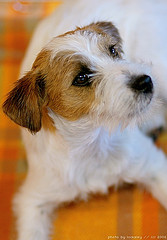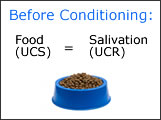Classical Conditioning
- Page ID
- 187371
|
|
Classical ConditioningIvan Pavlov was a scientist who wanted to study the digestion of dogs. Instead, what he learned impacted the way we think about learning. Ivan Pavlov A Russian scientist who wanted to study the digestion of dogs; the founder of classical conditioning. When Ivan Pavlov first set out to complete his research, he did not intend to research the conditioning of dogs. He was researching the digestive tract of dogs. However, after a few short days, he was quick to note three strange things:
This meant that receiving food could be conditioned to (associate with) the presence of the experimenter (who was feeding the dog).This is an example of Classical Conditioning A method of conditioning in which associations are made between a natural stimulus and a learned, neutral stimulus. . Understanding what Pavlov did is not confusing, however the terms can be. Let’8 s break the experiment down into parts.
Can you think of any area in your life where you are conditioned? How about the bell ringing to signify the end of class in the traditional school? The first time you heard the bell, you may not have been used to getting up and quickly leaving. Now, it is such an instinct many students are packed up and on the edge of their seat waiting for the bell to ring. Funny enough, if the bell is late, most students will stay in their seat. Try to think of some other ways you are conditioned. |



